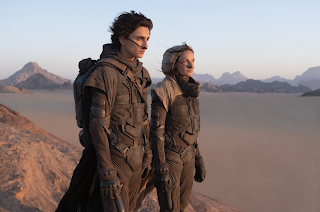 |
| Jeremy T. Thomas and Keri Russell in "Antlers" Photo Credit: RottenTomatoes.com |
Writer-director Scott Cooper has built a filmography around movies that have each focused on an element of Americana. His film “Crazy Heart” dealt with a fading country singer; “Out of the Furnace” told the story of Iraq war veterans in a Pennsylvania steel town; “Black Mass” chronicled infamous gangster Whitey Bulger; and his western, “Hostiles,” followed a growing bond between a U.S. Army calvary officer and a Cheyanne war chief. All together, these movies have depicted many regions of the country, offering very different American stories through various time periods.
Cooper’s latest film has him delving into supernatural horror concerning Native American folklore with “Antlers,” a story that boasts an atmospheric setting and quality performances, but doesn’t quite give its central themes the attention that they deserve.
Julia Meadows (Keri Russell) is a school teacher in a downtrodden Oregonian town. In her class is a troubled boy named Lucas Weaver (Jeremy T. Thomas), who keeps to himself. When Julia tries to learn more about him, she finds out that Lucas is taking care of a savage, ancient creature locked up in his house.
Russell offers fine work as a concerned teacher who tries to be source of guidance for Lucas. With Russell portraying a character who has experienced trauma in her childhood, she exhibits hints of the sadness that has built up over the years, but also does what she can to overcome it in order to help Lucas. Russell shows the strength in Julia’s character as she commits herself to protecting Lucas, no matter the cost, resulting in a character who could be Lucas’ only hope. This offers an emotional center to the story as they try to survive the deadly threat to their town.
Thomas is very effective in his breakout performance of someone who has a disturbing responsibility. In his voice and eyes, you can sense the intensity of the burden that he carries and the impact that it has on him. Thomas brings out the closed-off nature to his character as an individual who’s distressed at having to be the creature’s caretaker, and therefore can’t let anyone into his life, out of fear for their safety. Just like Julia, there’s immense hardship in Lucas’ life, and Thomas does well acting alongside an established actress like Russell as his character begins to open up to Julia.
The screenplay by Cooper, C. Henry Chaisson, and Nick Antosca, which is based on the latter’s 2019 short story, “The Quiet Boy,” finds a few intriguing angles from which to approach the source material, such as drug abuse and intergenerational trauma. However, the narrative doesn’t go as in-depth with its exploration of these themes as it should, which is unfortunate because this could have presented Antosca’s heart-pounding story in a new light.
As a director, Cooper captures the Oregonian landscapes with great detail, all with the help of cinematographer Florian Hoffmeister. They provide a palpable ambiance as we travel through the quiet and empty landscapes with Lucas, which reflect the loneliness that his character experiences. The camerawork also provides us with an effective use of darkness when we’re in Lucas’ house, creating tension as we hear the sounds of the horrors lurking within and wait to see what will be revealed in the shadows.
There isn’t any doubt that there’s some technical and acting skill in “Antlers,” but without the necessary bite to its narrative, you’ll get more out of the short story.
Grade: B-






